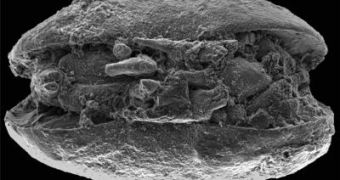A new fossil found in the Dry Valleys in the eastern regions of Antarctica, known to have lived some 14 million years ago in an ancient lake, now provides scientists with new evidence that indeed the south polar region of the planet was much warmer in the past. The fossil is a class of crustacea known as ostracods and it was discovered by undergraduate student Richard Thommasson during research at the North Dakota State University laboratory operated by Professor Allan Ashworth.
"This is a rare occurrence in the fossil record - but is the first of its kind from the whole of the Antarctic continent. Notwithstanding the significance of the fossil preservation, the presence of lake ostracods at this latitude, 77 degrees south, is also of great note. Present conditions in this Antarctic region show mean annual temperatures of minus 25 degrees C. These are impossible conditions to sustain a lake fauna with ostracods," said Dr Mark William of the Department of Geology at the University of Leicester.
The fossil indicates that after the period in which this species lived, the Antarctic continent went through a process of intense cooling, which could help scientists understand how the ice sheet evolved and how global warming is now influencing it.
"The fossil ostracods of the Dry Valleys signal a high latitude lake viable for animal colonisation that indicates a dramatic change in the climate of this region, from tundra conditions 14 million years ago, to the intensely cold continental interior climate experienced today," explained Dr William.
So far scientists have found no evidence that the ancient Antarctic lake could have been a proper environment for a widespread ostracod fauna, but if so, the crustacea would have been brought here in the form of eggs attached to the feathers or feet of migratory birds, which still influences the distribution of ostracods even today.

 14 DAY TRIAL //
14 DAY TRIAL //